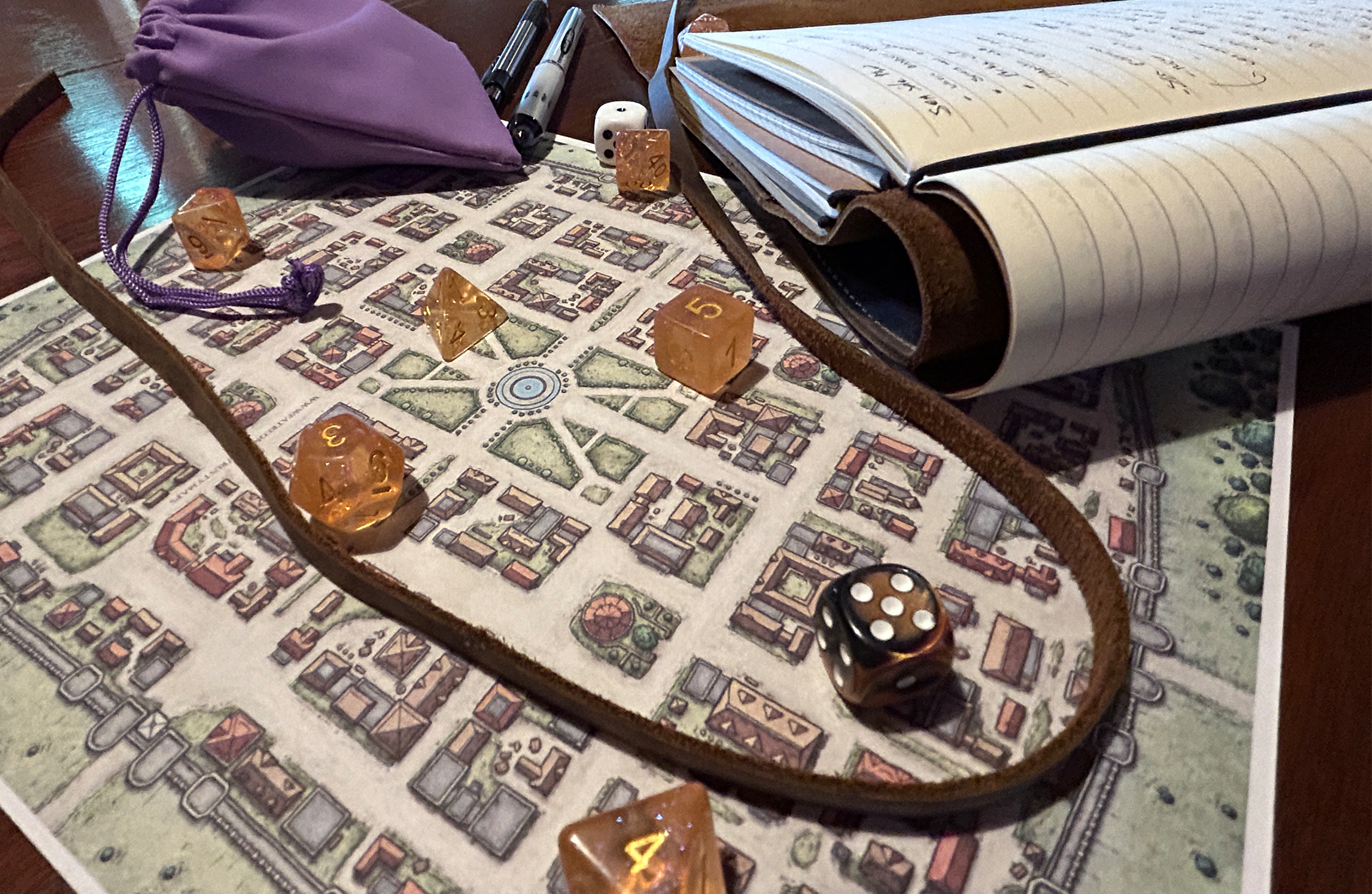There are hundreds of ways to create RPG campaigns. Many prescribed methods advise the GM to develop story arcs and non-player characters (NPCs) to fill necessary roles for plot advancement. The problem with doing this, however, is that it fuses the GM to the ideal of their campaign rather than the ideal of the table. The GM is compelled to steer players in the direction of their own plotline as opposed to facilitating story advancement organically at the table. But if we’re leaning into developing and progressing plot at the table without a rigid plan in place, should we go in with nothing? Nah. Just go in with very little.
Real life is a series of causes and effects: a thing occurs, and as a result, something is impacted by it and reacts. RPGs are like that too, but as a GM your job is to explicitly not predetermine what both sides of that event look like. Good GMs are facilitators, not storytellers. You get one side, your players get the other. Which side this is can change over the course of a session, but narrative control should be shared as much and as often as possible.
Atomic Campaign Creation (ACC) is a planning method aimed at stoking the creative energy of a GM without locking them into procedural linear plot advancement at the table. The core of ACC is generating small, discrete elements that can be dropped into a game as the fiction requires it. Those discrete elements organically compound into larger sections of plot, but when and how they connect is determined as a result of play versus a result of planning.
Encounters are basically single scenes where the players are introduced to something belonging to the world, interact with it, and are then impacted by the results of their interactions. Since a large part of table play will be based around encounters, I want to start off by talking about how to design encounters atomically. When you’re creating an encounter, build either an initial state with player and GM information or build an outcome that isn’t attached to any particular event. For example, typical initial state design might look like this:
It’s mid-day, and the party approaches a chasm bridge guarded by a pair of armed orcish mercenaries bearing the colors of the local lord. They are armed for quick travel, and light skirmishes.
GM info: They have shortswords, leather armor, and 12 HP. They have 5 GP in shared loot, and empty food pouches. One of them has a dagger in his boot. They are typically observant, but make notice checks at a disadvantage because they are fatigued.
Primary motivation: to obstruct.
The mercenaries aren’t willing to die for their post, but they have been tasked with only allowing people through who bear the seal of the local lord and are willing to fight if needed, and they’re loyal enough to refuse bribes. They’re also tired and hungry. They were supposed to have been relieved at dawn, but no replacements arrived.
We have an initial set up, a clear idea of the primary encounter obstacle. We have defined a handful of details that give us the general idea of how to manage the reactions of the mercenaries to what the PCs do, but haven’t explicitly said what those reactions will be; giving us a great deal of flexibility.
We also haven’t wasted any time in building ‘what if’ encounters. What if the players offer to get food for the mercenaries? What if the PCs just start stabbing? What if the PCs try and pretend they’re the relief the mercenaries have been waiting for. What if the PCs offer to track down the missing relief guard? What if the PCs do something completely unexpected that we haven’t prepared for? It doesn’t matter. You’ll know what to do next based on what the PCs decide to do. You’ve defined the initial set-up, and left the results to be defined by the narrative of the game.
Outcome design is even easier: The PCs find a note that says, “payment for the work performed has been disbursed - (name of local lord)”
Putting the note in the office of a known loyalist might give the players a clue as to recent plans the loyalist and the lord have been executing. Putting it in the bag of a dead assassin could mean something else entirely. Here, we’re not designing the context of the outcome, we’re only defining explicitly what the outcome is. What this leads players towards is entirely of their making, but it’ll look like you’ve had something planned all along. It piques interest; it’s narrative seasoning.
The best part about managing encounters this way is that it gives you just enough of an adventure prepared to be able to steer the narrative gently, but also gives the players a lot of agency to inform the narrative. When you get the hang of it, you can literally create two stacks of index cards: one for initial-states, and another for outcomes, then pull one randomly when you need something for the players to do. Or just seed them into the narrative as you need them. Weave it into the fiction, watch how players react, resolve, repeat.
There’s this idea that the GM has to be responsible for painting the entire picture of the world. Hopefully this article pushes you more in the direction of the GM simply giving players toys to interact with and seeing what they do on their own.
Brendan Quinn is the President of Tri-City Area Gaming, a 501(c)(3) nonprofit that promotes critical thinking skills with community-building events and supports game-based educational and charitable activities. He is an ASWB certified Therapeutic Game Master with over 20 years of GM experience.
Tri-City Area Gaming uses tabletop gaming as a framework for social interaction, education, and community building. They host nearly 100 events a year in order to bring folks together in a way that’s safe, friendly, and inclusive.
Check out Tri-City Area Gaming’s events and follow them on social media: tcag.carrd.co


